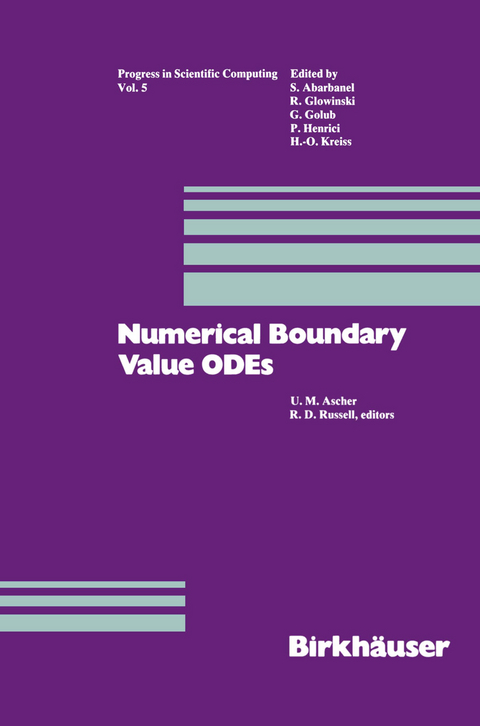
Numerical Boundary Value ODEs
Springer-Verlag New York Inc.
978-1-4612-9590-7 (ISBN)
In the past few years, knowledge about methods for the numerical solution of two-point boundary value problems has increased significantly. Important theoretical and practical advances have been made in a number or fronts, although they are not adequately described in any tt'xt currently available. With this in mind, we organized an international workshop, devoted solely to this topic. Tht' workshop took place in Vancouver, B.C., Canada, in July 1()"13, 1984. This volume contains the refereed proceedings of the workshop. Contributions to the workshop were in two formats. There were a small number of invited talks (ten of which are presented in this proceedings); the other contributions were in the rorm or poster sessions, for which there was no parallel activity in the workshop. We had attemptt'd to cover a number of topics and objectives in the talks. As a result, the general review papt'rs of O'Malley and Russell are intended to take a broader perspective, while the other papers aremore specific. The contributions in this volume are divided (somewhat arbitrarily) into five groups. The first group concerns fundamental issues like conditioning and decoupling, which have only rect'ntly gained a proper appreciation of their centrality. Understanding of certain aspects or shooting methods ties in with these fundamental concepts. The papers of Russell, dt' Hoog and Mattheij all deal with these issues.
I. Conditioning, dichotomy and related numerical considerations.- A unified view of some recent developments in the numerical solution of BVODEs.- The role of conditioning in shooting techniques.- On non-invertible boundary value problems.- Riccati transformations: When and how to use?.- Discretizations with dichotomic stability for two-point boundary value problems.- II. Implementation aspects of various methods.- Improving the performance of numerical methods for two-point boundary value problems.- Reducing the number of variational equations in the implementation of multiple shooting.- The spline-collocation and the spline-Galerkin methods for Orr-Sommerfeld problem.- III. Singular perturbation (‘stiff’) problems.- On the simultaneous use of asymptotic and numerical methods to solve nonlinear two-points problems with boundary and interior layers.- Two families of symmetric difference schemes for singular perturbation problems.- A numerical method for singular perturbation problems with turning points.- Numerical solution of singular perturbed boundary value problems using a collocation method with tension splines.- IV. Bifurcation problems and delay differential equations.- Solving boundary value problems for functional differential equations by collocation.- The approximation of simple singularities.- Calculating the loss of stability by transient methods, with application to parabolic partial differential equations.- A Runge-Kutta-Nystrom method for delay differential equations.- V. Special applications.- A finite difference method for the basic stationary semiconductor device equations.- Solution of premixed and counterflow diffusion flame problems by adaptive boundary value methods.
| Reihe/Serie | Progress in Scientific Computing ; 5 |
|---|---|
| Zusatzinfo | XII, 318 p. |
| Verlagsort | New York |
| Sprache | englisch |
| Maße | 155 x 235 mm |
| Themenwelt | Mathematik / Informatik ► Mathematik ► Analysis |
| Mathematik / Informatik ► Mathematik ► Arithmetik / Zahlentheorie | |
| Mathematik / Informatik ► Mathematik ► Wahrscheinlichkeit / Kombinatorik | |
| ISBN-10 | 1-4612-9590-4 / 1461295904 |
| ISBN-13 | 978-1-4612-9590-7 / 9781461295907 |
| Zustand | Neuware |
| Haben Sie eine Frage zum Produkt? |
aus dem Bereich


